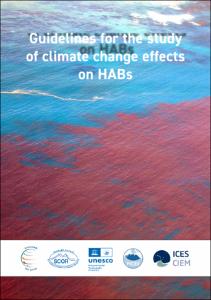| dc.contributor.author | Wells, Mark | |
| dc.contributor.author | Burford, Michele | |
| dc.contributor.author | Kremp, Anke | |
| dc.contributor.author | Montresor, Marina | |
| dc.contributor.author | Pitcher, Grant | |
| dc.contributor.author | Richardson, Anthony | |
| dc.contributor.author | Eriksen, Ruth | |
| dc.contributor.author | Hallegraeff, Gustaaf | |
| dc.contributor.author | Rochester, Wayne | |
| dc.contributor.author | Pitcher, Grant | |
| dc.contributor.author | Burford, Michele | |
| dc.contributor.author | Van de Waal, Dedmer | |
| dc.contributor.author | Bach, Lennart | |
| dc.contributor.author | Berdalet, Elisa | |
| dc.contributor.author | Brandenburg, Karen | |
| dc.contributor.author | Suikkanen, Sanna | |
| dc.contributor.author | Wohlrab, Sylke | |
| dc.contributor.author | Hansen, Per | |
| dc.contributor.author | Hennon, Gwenn | |
| dc.contributor.author | Sefbom, Josefin | |
| dc.contributor.author | Schaum, Elisa | |
| dc.contributor.author | Dyhrman, Sonya | |
| dc.contributor.author | Godhe, Anna | |
| dc.contributor.author | Zingone, Adriana | |
| dc.contributor.author | Escalera, Laura | |
| dc.contributor.author | Bresnan, Elieen | |
| dc.contributor.author | Enevoldsen, Henrik | |
| dc.contributor.author | Provoost, Pieter | |
| dc.contributor.author | Richardson, Anthony | |
| dc.contributor.author | Hamilton, David | |
| dc.contributor.author | Anderson, Clarissa | |
| dc.contributor.author | Hense, Inga | |
| dc.contributor.author | Chapra, Steven | |
| dc.date.accessioned | 2021-12-21T17:21:14Z | |
| dc.date.available | 2021-12-21T17:21:14Z | |
| dc.date.issued | 2021 | |
| dc.identifier.citation | GlobalHab Scientific Committee (2021) Guidelines for the Study of Climate Change Effects on HABs.
Paris, France, UNESCO-IOC/SCOR, 120pp. (IOC Manuals and Guides no 88). DOI: http://dx.doi.org/10.25607/OBP-1692 | en_US |
| dc.identifier.uri | https://repository.oceanbestpractices.org/handle/11329/1823 | |
| dc.identifier.uri | http://dx.doi.org/10.25607/OBP-1692 | |
| dc.description.abstract | Our planet Earth is changing. Marine and freshwater ecosystems are experiencing intense natural and anthropogenic pressures that will generate unforeseen changes in their structure and functioning. The drivers of climate change have already altered the dynamics and interactions of the biotic and abiotic components in these ecosystems, and these changes are anticipated to accelerate in the future. Embedded within natural aquatic ecosystems are Harmful Algal Blooms (HABs) that are noxious to aquatic organisms as well as human health and wellbeing.The major aim of these guidelines is to communicate standardized strategies, tools, and protocols to assist researchers studying how climate change drivers may increase or decrease future HAB prevalence in aquatic ecosystems. | en_US |
| dc.description.sponsorship | IOC- HAB, SCOR | en_US |
| dc.language.iso | en | en_US |
| dc.publisher | UNESCO-IOC/SCOR | en_US |
| dc.relation.ispartofseries | Intergovernmental Oceanographic Commission Manuals and Guides;88 | |
| dc.rights | Attribution-ShareAlike 3.0 IGO (CC BY-SA 3.0 IGO) | |
| dc.rights.uri | http://creativecommons.org/licenses/by-sa/3.0/igo/ | |
| dc.subject.other | HAB | en_US |
| dc.subject.other | Harmful algal blooms | en_US |
| dc.subject.other | Climate change effects | en_US |
| dc.title | Guidelines for the study of climate change effects on HABs. | en_US |
| dc.type | Report | en_US |
| dc.description.status | Published | en_US |
| dc.format.pages | 120pp. | en_US |
| dc.contributor.corpauthor | GlobalHAB Scientific Committee | |
| dc.description.refereed | Refereed | en_US |
| dc.publisher.place | Paris, France | en_US |
| dc.subject.parameterDiscipline | Disease, damage and mortality | en_US |
| dc.description.currentstatus | Current | en_US |
| dc.description.sdg | 13 | en_US |
| dc.description.sdg | 14.a | en_US |
| dc.description.eov | Phytoplankton biomass and diversity | en_US |
| dc.description.adoption | International | en_US |
| obps.contact.contactemail | mlwells@maine.edu | |
| obps.resourceurl.publisher | http://hab.ioc-unesco.org/index.php?option=com_oe&task=viewDocumentRecord&docID=22885 | |
 Repository of community practices in Ocean Research, Applications and Data/Information Management
Repository of community practices in Ocean Research, Applications and Data/Information Management

